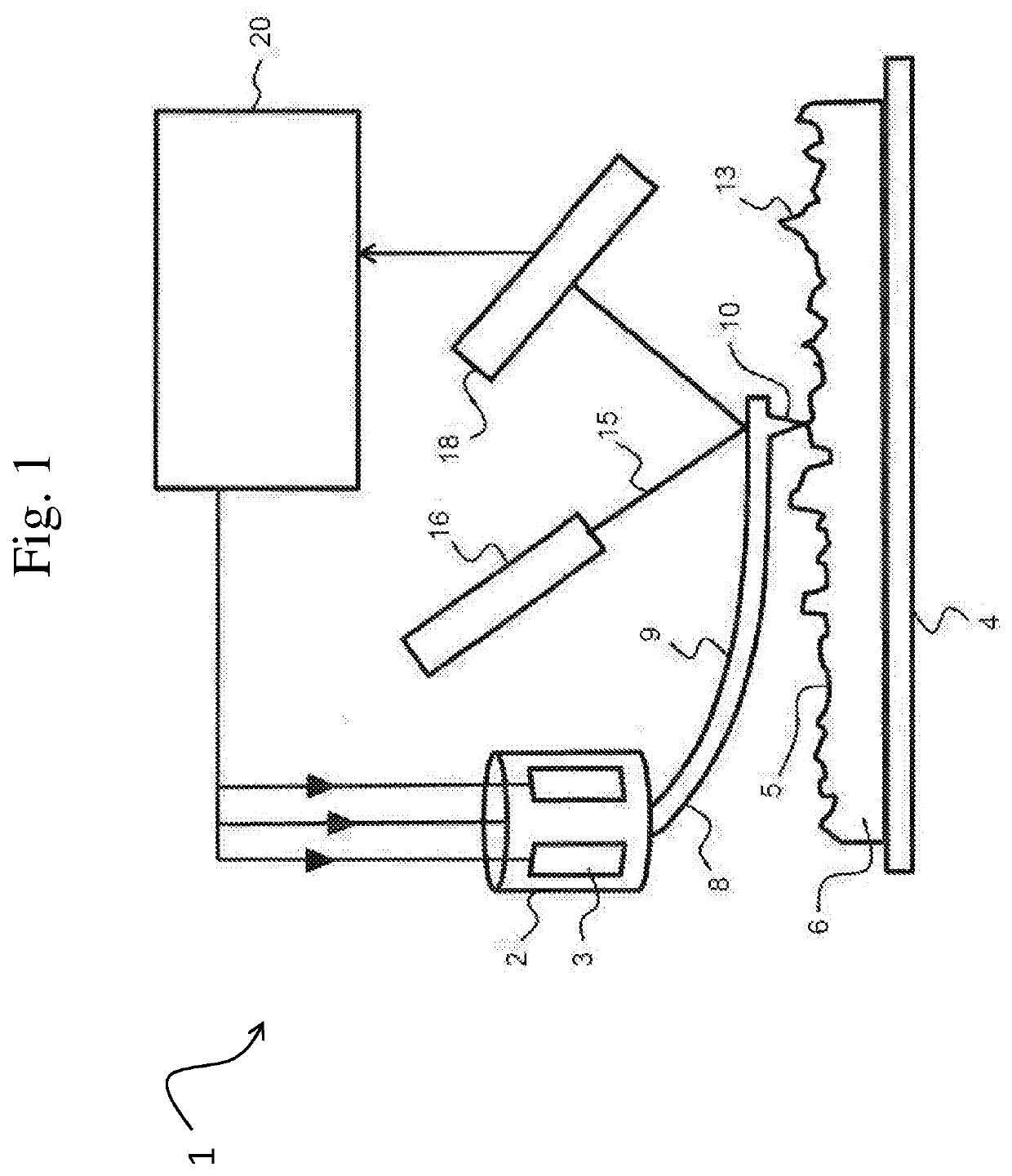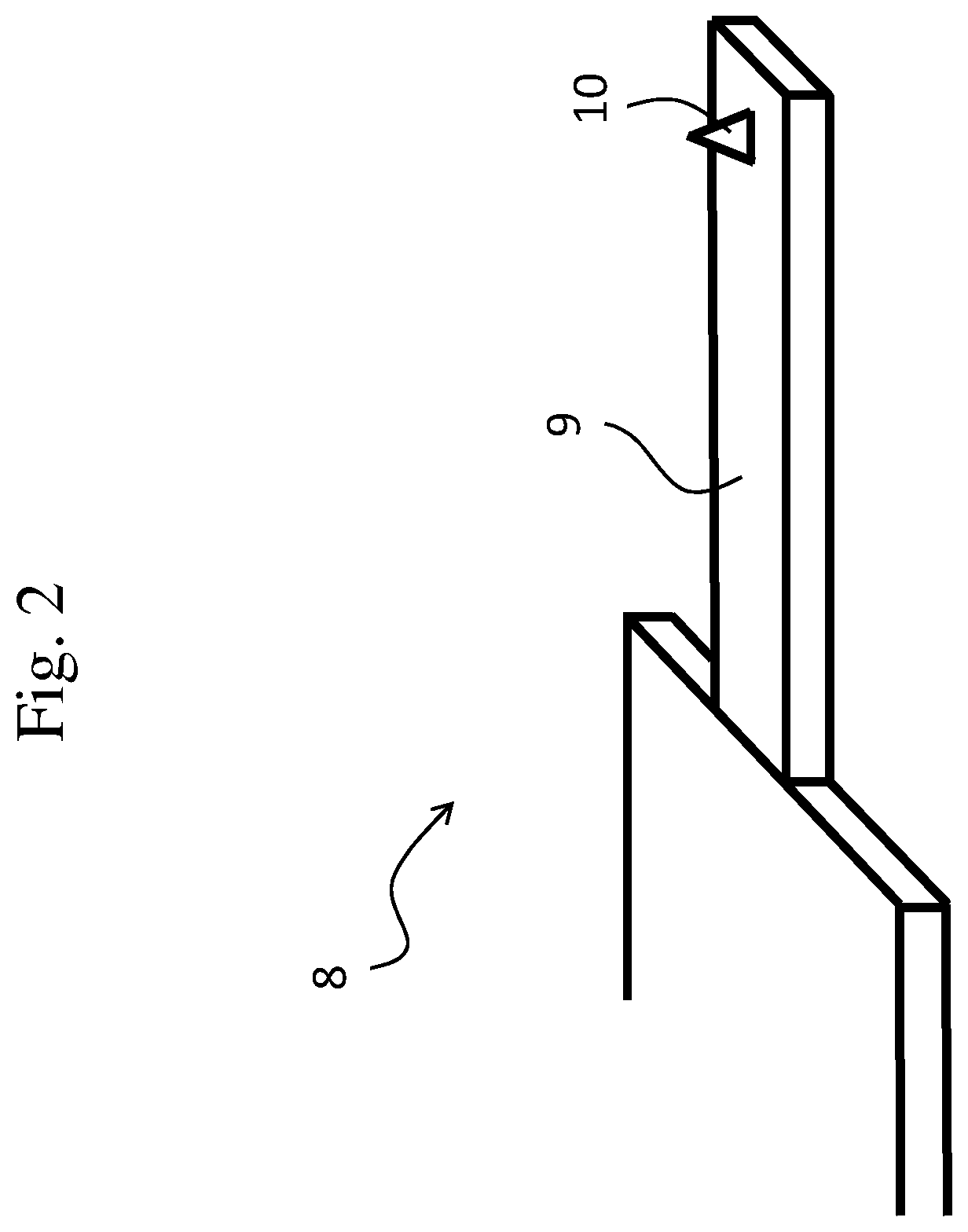Method of modifying a surface of a sample, and a scanning probe microscopy system
a scanning probe and microscopy technology, applied in scanning probe microscopy, measuring devices, instruments, etc., can solve the problems of complex system, multiple scanning and cantilevers, typical nano-scratching, etc., to achieve the effect of reducing the distance between the probe and the sample surface, increasing or decreasing the force, and improving accuracy
- Summary
- Abstract
- Description
- Claims
- Application Information
AI Technical Summary
Benefits of technology
Problems solved by technology
Method used
Image
Examples
Embodiment Construction
[0053]FIG. 1 schematically illustrates the working principle of a typical atomic force microscope (AFM). A probe head 2 is shown comprising piezo type drivers 3 for the X-, Y-, and Z-directional motion of a probe 8. The probe 8 comprises a cantilever 9 having a probe tip 10 arranged for scanning a sample surface 5 of a sample 6. During scanning, a dither piezo (not shown) or other means of actuations such as thermal, electrical, electrostatic, microwave, optical, photo-thermal, etc. actuation may drive the cantilever 9 in vibrational mode, advantageously close to a resonant frequency, to enable tapping of the probe tip 10 on the sample surface 5. The manner of applying a vibrational motion to the probe tip 10 is known to the skilled person.
[0054]Scanning of the sample surface 5 is performed by moving the probe tip 10 in the X- and Y direction parallel to the sample surface 5 (or alternatively, by moving the substrate surface in the X- and Y-directions while maintaining the position ...
PUM
 Login to View More
Login to View More Abstract
Description
Claims
Application Information
 Login to View More
Login to View More - R&D
- Intellectual Property
- Life Sciences
- Materials
- Tech Scout
- Unparalleled Data Quality
- Higher Quality Content
- 60% Fewer Hallucinations
Browse by: Latest US Patents, China's latest patents, Technical Efficacy Thesaurus, Application Domain, Technology Topic, Popular Technical Reports.
© 2025 PatSnap. All rights reserved.Legal|Privacy policy|Modern Slavery Act Transparency Statement|Sitemap|About US| Contact US: help@patsnap.com



